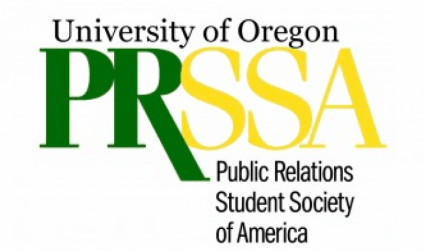
It started as a simple question to a professor: “Who should I be following on social to keep up to date on the industry and learn more about PR and media in general?” From there, it blossomed into an idea to compile a list of people and companies students in the SOJC should be following in order to learn outside of the classroom. Each account was chosen by professors in the SOJC (with a few bonuses added by myself) and includes a small blurb about why students should be following. In no particular order, these accounts will give students a diverse range of profiles so they can learn about the media climate, techniques to use and the wonderful, crazy world outside of Eugene.
Lydia Polgreen: @LydiaPolgreen
She is the editor-in-chief of The Huffington Post. She is believed to be the first woman of color to head a major news organization. She has an international perspective as a former foreign correspondent who grew up in Ghana. She was quick to adapt to digital news and is a prolific Twitter user. She’s working to reenergize a newsroom that had previously had only one editor—Arianna Huffington, the organization’s founder.
Fast Company: @FastCompany
Originally a monthly magazine, now a popular news website, Fast Company focuses on business, technology, and design. Fast Company operates as a network of websites online that focus on a variety of issues from the environment to the economy. Students should follow if they are considering entrepreneurship in their future.
Recommended by Public Relations Professor Kelli Matthews
Brian Stelter: @BrianStelter
He is the host of CNN’s @ReliableSources and is a senior media correspondent. Students should be following him because he will help them to understand the latest developments in modern media. He is especially knowledgeable about media coverage of the political landscape.
Recommended by Journalism Professor Damian Radcliffe
Kelli Matthews: @KelliMatthews
She is a PR professor at the SOJC, but is known nationally for her social media know-how. “She’s the first person I thought of in terms of Twitter importance. I’ve learned so much from her.”
Recommended by Public Relations Professor Dean Mundy
Gini Dietrich: @ginidietrich
Gini Dietrich is the founder and CEO of Arment Dietrich. She is very involved in the PR world and has authored books and blogs on the subject of digital marketing communications. She operates “Spin Sucks,” which students should also follow.
Recommended by Public Relations Professor Kelli Matthews
Salena Zito: @SalenaZito
She writes for The New York Post and The Washington Examiner. She accurately predicted that Donald Trump would win Pennsylvania when no one else did. She is now a commentator for CNN. She lives just outside of Pittsburgh, Pennsylvania, which takes her out of the bubble that tends to envelop media based in New York and D.C. “I’ve found her reporting and perspective highly valuable over this year.”
First Draft News: @firstdraftnews
The account is for a non-profit working on solutions to challenges with trust and truth in news. Following will teach students about social media reporting, verification tips and case studies.
Recommended by Journalism Professor Damian Radcliffe
Arik Hanson: @arikhanson
Arik Hanson is the head of ACH Communications. He focuses on a blend of digital and traditional PR through multiple marketing channels. He has been in the communications industry for more than 20 years and has worked with Fortune 500 companies as well as small boutiques. Students should follow him to learn about theory and different parts of the industry.
Recommended by Public Relations Professor Kelli Matthews
Karen Freberg, Ph.D: @kfreberg
She is from Louisville. She’s amazing and provides a ton of great information on Twitter. I’ve learned so much from her.
Recommended by Public Relations Professor Dean Mundy
Spin Sucks: @SpinSucks
Founded by Gini Dietrich, Spin Sucks intends to “change the perception people have the PR industry.” Tweets focus on how to use PR without becoming a “shark” and to be respected in the industry.
Recommended by Public Relations Professor Kelli Matthews
Margaret Sullivan: @Sulliview
She’s a columnist for The Washington Post and former public editor for The New York Times. She is one of the sharpest media analysts working today. She tweets links to her own work as well as other noteworthy links and engages with followers. “I don’t miss anything [she] writes.” She’s an important figure as the media learns how to handle the Trump administration. “An essential follow for any student who wants to be an engaged citizen of the world. I don’t say that lightly.”
Recommended by Journalism Professor Lori Shontz
News Whip: @NewsWhip
The account offers news, trends and insights from the world’s most advanced content intelligence platform. It has great data on social, including analysis of campaigns, platforms, publishers etc.
Recommended by Journalism Professor Damian Radcliffe
Corey duBrowa: @coreydu
He is a University of Oregon alum and the current VP of Communication for Starbucks. He’s great on Twitter. He not only represents Starbucks well, but has a great Twitter personality overall.
Recommended by Public Relations Professor Dean Mundy
PR Daily: @PRDaily
Advertised as, “your one-stop shop for news on PR, marketing, social media & more,” PR Daily has everything and anything a PR major would need to know about the industry. It is important for students to stay updated on what is occurring on a daily basis in order to stay current in an ever-changing market.
Recommended by Public Relations Professor Kelli Matthews
Jay Rosen: @jayrosen_nyu
He’s a journalism professor at New York University. He is one of the smartest media analysts and critics working today. He tweets links to his own work and shares other noteworthy links. He engages with followers on Twitter and his blog. “I don’t miss anything he writes.” He is an important press figure in the media in terms of politics. “Essential readings for students who want to be engaged citizens of the world.”
Recommended by Journalism Professor Lori Shontz
Bulldog Reporter: @BulldogReporter
“Bulldog Reporter serves PR professionals by delivering industry news, opinion and analysis.” Students should be following because the account is produced by PR professionals for PR professionals and will help students establish career techniques and principles that they will be able to take with them when they enter the job market post-undergrad.
Recommended by Public Relations Professor Kelli Matthews
Tina McCorkindale: @tmccorkindale
She is the President and CEO of the Institute for PR. She is an amazing leader (and all-around amazing person), great Twitter personality and provides a ton of great resources that bridges academics and practitioners. She was the PRSSA national adviser. (I’d also recommend following the Institute for PR. It is a great organization with many resources.)
Recommended by Public Relations Professor Dean Mundy
Pew Research Center: @pewresearch
Data. Data. Data. PR is based on results in so many ways. By following Pew Research Center, students can learn about data and analysis on “issues, attitudes and trends” in the U.S. Following will help students stay up to date on the latest trends.
Recommended by Public Relations Professor Kelli Matthews
Juan-Carlos Molleda: @GlobalPRMolleda
Students should be following the Dean of the School of Journalism and Communication for a multitude of reasons:
1) To learn more about the happenings at UO and #LifeAsAJStudent.
2) To learn about the PR industry as Dean Molleda has years of experience working professionally.
3) To get a more global perspective from a very worldly person.
University of Oregon PRSSA: @UOPRSSA
Follow the University of Oregon chapter of the Public Relations Student Society of America in order to stay up to date on our events and meetings and gain firsthand experience networking with local professionals. Engage in our workshops and learn about navigating the SOJC!
Recommended by author/PRSSA member Jillian Niedermeyer












